50 greatest Pixar moments
11. A fiery end
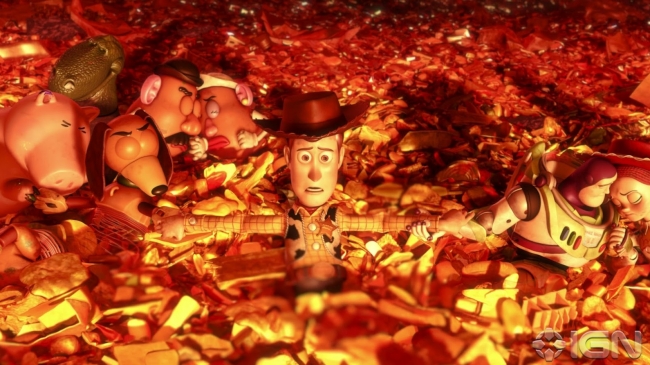
The moment: Abandoned by Lotso towards the end of Toy Story 3, Andy's toys face what is surely certain death in the furnace at the Tri-County Landfill. Resigned to the inevitable, they hold hands in a gesture of love and solidarity.
Why it's great: They wouldn't, would they? It seemed scarcely plausible that Pixar would kill off its most beloved characters… but then, after Up, anything was possible.
Pixar say: Lee Unkrich on the furnace scene - "I didn't want characters cracking jokes or making light of the situation. I wanted to treat it as realistically and honestly as possible. I always thought of it as a family in a plane that's going down. What are you going to do? Are you going to shriek and scream or are you going to become quiet and take your family's hands and hold them close, and go down together? I think that's what would happen. So I tried to stay truthful to that idea -- these toys facing their end with dignity. Quiet dignity. And I think it's that idea that became a very powerful idea and thing for the audience to experience."
10. A kind of magic
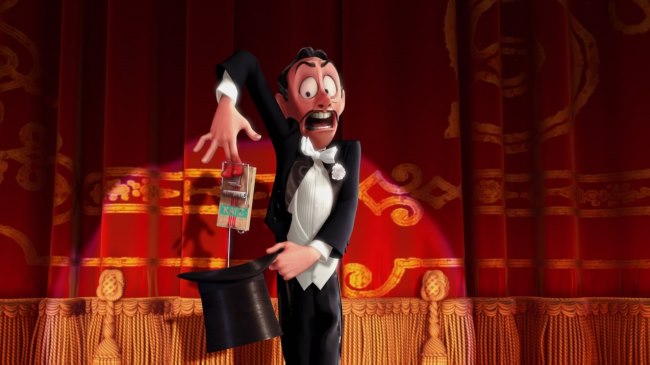
The moment: In Presto, a disgruntled rabbit gets revenge on his magician owner by taking advantage of the magic hat he's meant to be pulled out of.
Why it's great: Doug Sweetland's anarchic film is arguably the finest short in the Pixar canon, a gag-filled homage to the golden age of Looney Tunes animation.
Pixar say: Doug Sweetland on the central concept: "I just loved the physics of the hats. There was no end to the variations on ‘in one hat and out the other'; I could spend all day doing that. What I found, is that’s not necessarily a story!"
9. Beeps and whistles
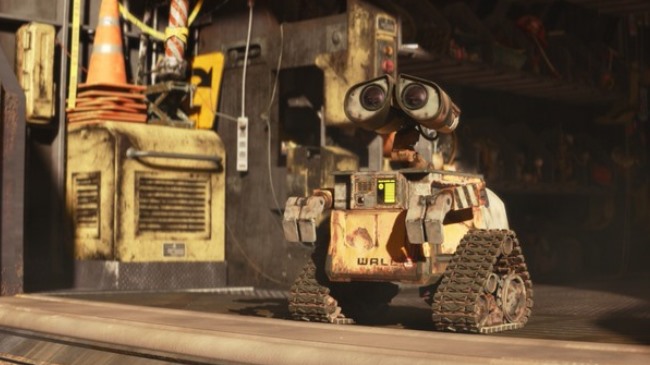
The moment: The radical first act of Wall-E breaks new ground for Pixar by being nearly - with the exception of the songs from Hello Dolly - dialogue-free.
Sign up for the Total Film Newsletter
Bringing all the latest movie news, features, and reviews to your inbox
Why it's great: A glorious throwback to the heyday of Charlie Chaplin, Pixar proves it can create a brilliant character through just the personality of the animators and a few beeps and whistles from Star Wars sound guru Ben Burtt.
Pixar say: Andrew Stanton on finding Wall-E's voice - "There's dialogue from frame one. Each of those beeps and those squawks and those whirrs mean something and they're trying to convey a specific thing, so I actually wrote the script with dialogue – wrote it just like a regular script. I would just put the dialogue in brackets. So if he says 'hey, come over here,' I wrote 'hey, come over here' and I put it in brackets."
8. Play nice
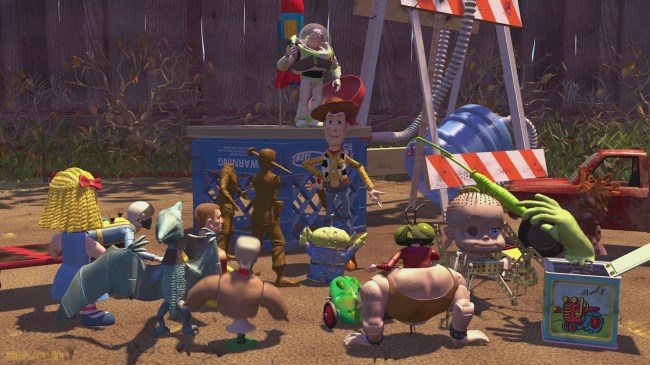
The moment: Sid gets his comeuppance in Toy Story, as Woody leads the boy's 'mutant' toys in a revolution that sees them reveal their sentience.
Why it's great: A playful yet sinister riff on Close Encounters of the Third Kind that harnesses the surreal wonder of toys coming to life.
Pixar say: Editor Lee Unkrich on the scare factor - "We were worried about that, whether Sid’s mutant toys were going to be too frightening for kids. At the end of the day, kids like being scared a little bit, and everything works out. Again, it’s all about being in that safe environment of everything working out, and being safe in a movie theatre."
7. The adventure
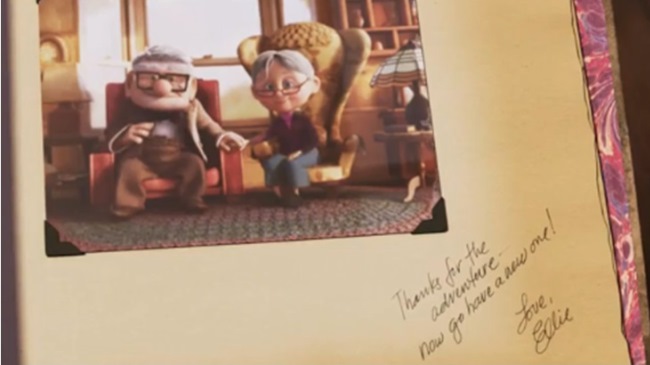
The moment: In Up, Carl finally takes a look at Ellie's scrapbook and realises she has added photos of their marriage, ending with the hand-written note, "Thanks for the adventure".
Why it's great: While the opening sequence broke new ground in animation, this unexpected grace note is one of Pixar's most seismic emotional beats, restoring the misanthropic, grieving Carl back to kindness and positivity.
Pixar say: John Lasseter on the film's meaning - "That’s really what the message of Up is - that the adventure of life is not particularly big, it’s the wonderful, everyday, simple things that make your life so special."
6. When she loved me
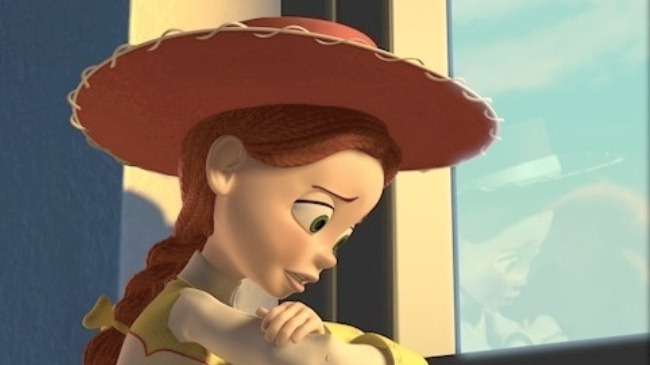
The moment: Jesse sings her heart out in Toy Story 2, as she explains to Woody just why she's so cynical about the long-term prospects of having an owner.
Why it's great: Positioned at the exact centre of the Toy Story trilogy, this marks the point where the series truly grows up, shifting from a tale of childhood imagination to a mature reflection on growing up.
Pixar say: Composer Randy Newman on working with Pixar - "Pixar is the only example I know of where they produce art by committee. They take notes, listen to each other, change it."
5. Bing Bong's emotional trauma
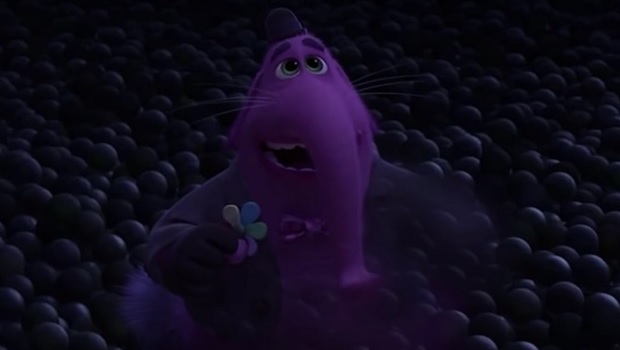
The moment: Joy is stuck down in the Memory Dump with Riley's imaginary friend Bing Bong and both are in danger of being forgotten. They spot Bing Bong's flying wagon but he has to make a noble sacrifice to allow Joy to escape.
Why it's great: Pixar are adept at making adults weep and this moment is no exception. It's one of the darkest moments in their canon, but so beautifully delivered - "take her to the moon for me" - that you applaud them through the tears.
Pixar say: Richard Kind (who voices Bing Bong) on original version - "The scene down in the valley was about 40 seconds to a minute longer. And I loved it. The reason why they cut it - and I think they're sort of right - was because that earlier version was [so] heart-wrenching. I likened it to the scene in Bambi when his mother dies. We don't need to see that again."
4. The final piece of the puzzle
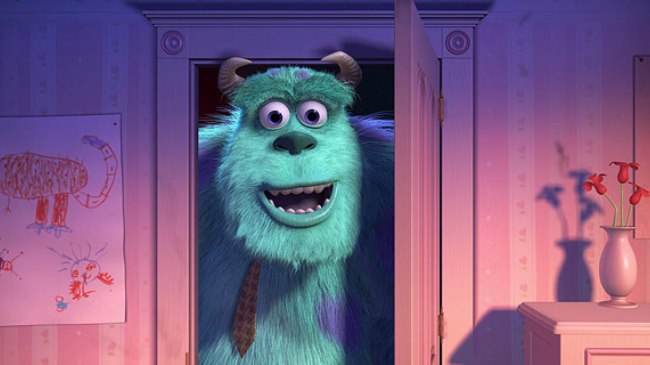
The moment: Having thought he'd never see Boo again, Sully is delighted when Mike reveals he has recreated the girl's door at the end of Monsters, Inc. All Sully has to do is add the splinter he'd kept as a memento.
Why it's great: The greatest final shot in any Pixar film is a close-up of Sully's face erupting into pure joy - emotion that any live-action actor would be hard pushed to replicate.
Pixar say: Pete Docter on Sully - "So with monsters, it just seemed like 'Okay, you gotta have fur. You gotta have something that’s approachable and fuzzy and monster-y at the same time.' So we put a lot of development into that. It was scary at the beginning, because no one was convinced that we could do it. That’s not totally true; the technical guys who did it were pretty assured. But it had never been done, anyway. And it was something we were betting a lot on. So luckily, that paid off."
3. Anton's epiphany
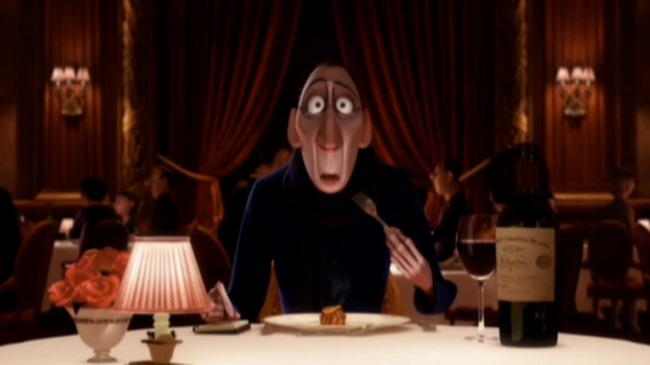
The moment: In Ratatouille, merciless food critic Anton Ego is dismissive when Remy sends him a plate of the titular stew… until he tries it and is transported back to a childhood memory of his mother's cooking.
Why it's great: It's a spine-tingled, unexpected emotional rush that effortlessly nails the film's themes about not judging by appearance and appreciating the virtues of talent.
Pixar say: Brad Bird on the challenges of animating food - "Computers aren’t really very interested in making things look delicious. They’re interested in things looking clean and things looking geometrically precise, and usually hard not squishy – not tactile. Computers are great for perfection. They’re not great at organic things. We had to work really hard to get the food to look like you could taste it and smell it and enjoy it.”
2. Farewell, Andy
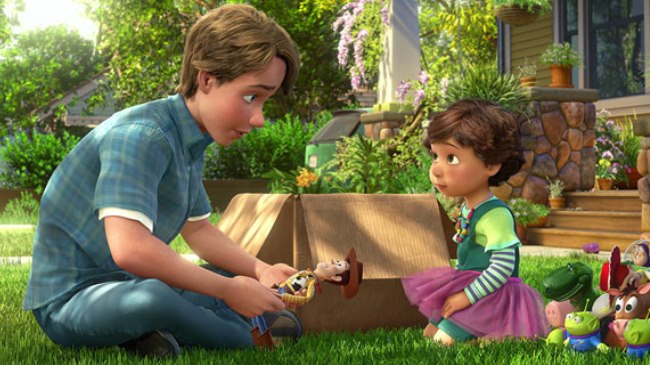
The moment: Woody has fixed it so that Andy's toys are given away to Bonnie at the end of Toy Story 3. But when she sees Woody, it's obvious that it's also time for the cowboy to say goodbye to his owner, too.
Why it's great: It's the moment the entire trilogy has been building towards, and Pixar aces it by being as joyous as it is melancholy, and setting up new adventures for the gang without compromising on the sustained richness of everything to date.
Pixar say: Lee Unkrich on the film's emotional core - "We had lost friends here and there. We had raised children and some of us were sending kids off to college. We thought a lot of it had to do with our own personal ride so it really did surprise us that, on a global level, people were so affected by the movie. We realised that we had inadvertently tapped into some really deep-seated emotions."


